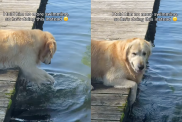Question:
What is cryptorchidism and how is it treated?
Answer:
A cryptorchid has one or both testicles inside the belly or under the skin, instead of migrating or descending into their scrotum (or sac).
This condition is not uncommon in dogs, and rare in cats. Small dog breeds have a three-time time higher risk than larger dog breeds. Chihuahuas, miniature Schnauzers, Pomeranians, Poodles, Shelties and Yorkies are at higher risk.
Many people think testicles can normally take up to six months to “descend.” In fact, it should only take two months, in most cases.
Undescended testicle(s) can cause serious health problems, including torsion of the testicle, a painful condition where the testicle twists on its own axis, and tumors of the testicle, such as Sertoli cell tumors and seminomas. The risk of these tumors appearing is actually 14 times higher than in a testicle is its normal position.
Treating Cryptorchids
Neutering is highly recommended, as soon as the condition is diagnosed. Removal of both testicles is mandatory, even if one is in its normal position in the scrotum. Cryptorchidism is hereditary. Breeding an affected male would spread the bad genes further. And surely, no reasonable pet owner or breeder would knowingly create puppies with a risk of testicular cancer!
The prognosis is typically good in cryptorchid pets–even if a tumor was found, testicular cancer rarely spreads. As always, the best outcome is achieved with an early diagnosis and early surgery.









